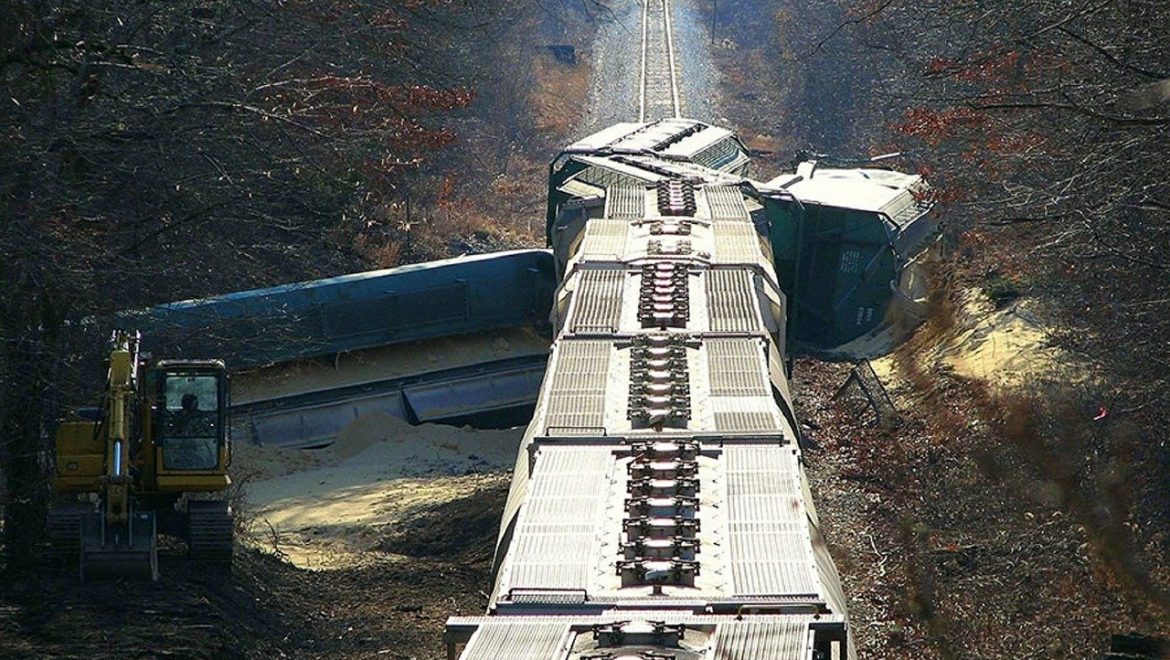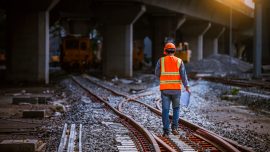How Train Derailments Happen and How to Prevent Them
If you’re a Nebraska railroad contractor, the idea of a train derailment is frightening, which is why it’s important to know how to prevent train derailment.
When a train derails, it’s the type of thing that makes the news, often with footage of emergency responders, survivors walking around in a daze.
But in truth, train derailments that lead to injuries are very rare, as most trains in America carry freight rather than passengers, and train cars are designed to survive impacts.
Writing in his book Train Wreck: The Foresnics of Rail Disasters, George Bibel says:
“Most derailments are relatively benign, and can be compared to a person walking down the street, tripping, getting back up, and continuing on her or his way. Unless derailed cars crash into houses, strike passenger trains, or release hazardous material into a neighborhood, derailments do not normally affect civilians.“
In addition, train derailments are becoming less and less common over the past 40 years due to upgrades in track technology.
Still, that doesn’t mean that track safety and efficiency isn’t something Nebraska railroad contractors should ignore.
Here are a Few Tips on How to Prevent Train Derailment

1. Inspect your tracks
Every inch of track in your facility should undergo a quarterly inspection by a Nebraska railroad contractor who is qualified to perform inspections.
You should perform regular, consistent maintenance on rail infrastructure and instruct your team on how to spot hazards and defects along the tracks.
2. Wide gauge tracks
Maintaining the correct width between rails — otherwise known as “gauge” — is important to ensuring safe conditions.
The standard gauge is 56.5 inches. Anything beyond this width is known as wide gauge and may lead to derailments. You can inspect your lines for a wide gauge track by looking for loose or missing bolts and joint bars.
3. Inspect Broken Railroad Ties
In addition, you should keep an eye out for broken railroad ties, spikes that have come loose or gone missing, or tie plates that have cut into the ties.
Check for places where mud is sitting atop the ballast, which could signal a feeble foundation and improper drainage.
4. Look for Broken Switch Points
Look for broken switch points, as these can put a gap between the rail and point and allow the wheels of a car to move along the wrong track.
5. Look for Flagging Structural Integrity
Finally, look for signs of flagging structural integrity (poor spike quantity or tie conditions) that could lead to a buckled or rolled rail.
Preventing sideswipes
Stopping sideswipes in your facility can help guard against derailments. Sideswipes can happen when rail cars are allowed to go past their clearance points and workers don’t know the tracks are obstructed.
You can prevent these incidents with clearance cone markers, which indicate where cars can be spotted without blocking an adjacent track. It’s also a good idea to paint two railroad ties 15 feet back along the cones.
How Often do Trains Derail
Trains derail much more often than you would expect all across the United States of America. The statistics are quite staggering according to McAleer Law. According to McAleer Law:
- Trains derail every hour and half across the US
- Every two weeks a train that has hazerdous cargo onboard derails from the train tracks
Annual Railroad Maintenance is Necessary to Prevent Derailments
Every year you should be inspecting and maintaining your railway for the most common causes for railroad derailment which include:
- Railroad ballast derailment: the ballast is the underlying rock around the tracks that maintain the height of the soil. If the ballast is laid wrong, the tracks can go deeper into the soil and warp the tracks as well as cause unwanted vibrations that can cause derailments. Laying your ballast properly at the proper depths is very important to the entire structure of your railway.
- Railroad sleeper derailment: Generally railroad sleepers, also called railroad ties, transfer loads to the track ballast and subgrade, hold the rails upright and keep them spaced to the correct gauge. The railroad ties keep provide stability for the rails on your railway. Without a stable railway your likely to derail at high speeds.
R&S Track Maintenance: Expert Nebraska railroad contractor
For more than 30 years, companies seeking safe, efficient rail services have turned to R&S Track Maintenance, a Nebraska railroad contractor who provides far more than rail maintenance and railroad construction.
Our services include surveying, consulting, track maintenance and repair, and inspections. Our experts know what red flags to look for and can recommend the steps you’ll need to take to prevent train derailment. Contact us today to learn more.




